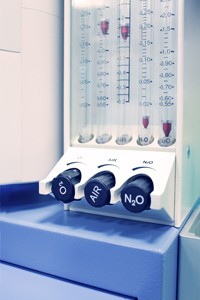 The search for a substance that would let a patient slip into merciful oblivion during surgery has been one of mankind’s goals for centuries. In North America, we can thank a dentist, Horace Wells of Connecticut, for the development of nitrous oxide as a form of dental anesthesia.
The search for a substance that would let a patient slip into merciful oblivion during surgery has been one of mankind’s goals for centuries. In North America, we can thank a dentist, Horace Wells of Connecticut, for the development of nitrous oxide as a form of dental anesthesia.
During the early 1840s, Dr. Wells was looking for ways to make his patients more comfortable during procedures. While watching a demonstration of a popular intoxicant, a drug called “laughing gas,” Dr. Wells saw the possibility of helping his patients. The next day, he had one of his own teeth pulled while he inhaled this new mixture. The operation was a success, and Wells began using “laughing gas” in his practice.
When we elect to use nitrous oxide or “laughing gas” (an odorless gas administered through a mask), it produces a form of conscious relaxation. Although this method is not used in place of a local anesthetic injection, it does raise the threshold of pain, making dental procedures more relaxed and comfortable.
Modern dentistry has a lot to offer patients in order to assure a virtually painless treatment session. Nitrous oxide is just one example.

